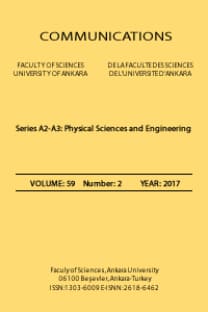SYNAPTIC TRANSMISSION: A MODEL ON THE FORMATION OF END-PLATE POTENTIAL AND A STUDY ON SIMULATION
Synaptic transmission, EPP, MEPP
___
[1]- Neural Signaling. In: Dale Purves, George Augustine, David Fitzpatrick, William Hall, Anthony-Samuel Lamantia, Leonard White Neuroscience. 5th Edition.[2]- Dale HH, Feldberg W, and Vogt M (1936) Release of acetylcholine at voluntary motor nerve endings. J Physiol 86:353–380
[3]- Fatt P, Katz B. An analysis of the end-plate potential recorded with an intra-cellular electrode. J Physiol. 1951;115:320–370.
[4]- del Castillo J, Katz B. Quantal components of the end-plate potential. J Physiol. 1954;124:560–573.
[5]- Tuckwell, HC. Elemantary Aplications of Probability Theory, Chapman & Hall, 1995.
[6]- Tuckwell, HC. Stochastic Proseses in the neuroscience, The Society for Industrial and Applied Mathemetics, 1994.
[7]- Öztürk, F. and Özbek L. Matematiksel Modelleme ve Simülasyon, 2016.
- ISSN: 1303-6009
- Yayın Aralığı: Yılda 2 Sayı
- Başlangıç: 2019
- Yayıncı: Ankara Üniversitesi
A COMPARATIVE STUDY: VOLTAGE MULTIPLIERS FOR RF ENERGY HARVESTING SYSTEM
INVESTIGATING DOUBLY CHARGED LEPTONS AT FUTURE ENERGY FRONTIER MUON-PROTON COLLIDERS
SYNAPTIC TRANSMISSION: A MODEL ON THE FORMATION OF END-PLATE POTENTIAL AND A STUDY ON SIMULATION
Levent ÖZBEK, Çağrı TEMUCIN, Bülent CENGIZ, Fikri ÖZTURK
Evrim COLAK, Atilla Ozgur CAKMAK
EFFICIENT CHEBYSHEV ECONOMIZATION FOR ELEMENTARY FUNCTIONS
QUALITY OF SOFTWARE PROJECTS – A CASE STUDY
Tülin ERCELEBI AYYILDIZ, Alper KIRAL
ESTIMATING CO2 EMISSIONS BY USING ENERGY INTENSITY DATA OF OECD COUNTRIES
DESIGNING A SECURE BLOCKCHAIN-BASED TRADING PLATFORM FOR INTERNET OF THINGS
Aydın ELBUZ, Murat OSMANOGLU, Omer Ozgur TANRIOVER
PRIVACY-PRESERVING K-NEAREST NEIGHBOUR INTERPOLATION METHOD IN AN OUTSOURCED ENVIRONMENT
